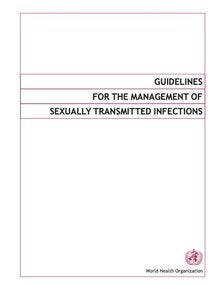Sexually transmitted infections (STIs) are among the most common causes of illness in the world and have far-reaching health, social and economic consequences for many countries. The emergence and spread of human immunodeficiency virus (HIV) infection and acquired immunodeficiency syndrome (AIDS) have had a major impact on the management and control of STIs. At the same time, resistance of several sexually transmitted pathogens to antimicrobial agents has increased, adding to therapeutic problems. In 1991, WHO published recommendations for the comprehensive management of patients with STIs within the broader context of control, prevention and care programmes for STI and HIV infection. WHO convened an Advisory Group Meeting on Sexually Transmitted Diseases Treatment in May 1999 to review and update treatment recommendations in the light of recent developments. In November 2001, an expert consultation on improving the management of STIs was convened by WHO in Geneva. The consultation focused on the syndromes of genital ulcers and vaginal discharge. The former because of the observed increase of herpes simplex virus type 2 (HSV2) as the main cause of genital ulcers in developing countries, and the latter for its continued complexity and controversy as an entry point for managing cervical gonococcal and chlamydial infections. Recommendations from the consultation have led to the revisions included in this publication, covering the two areas of syndromic management of genital ulcer disease and vaginal discharge. |

